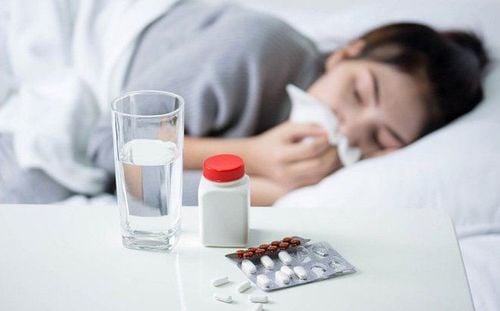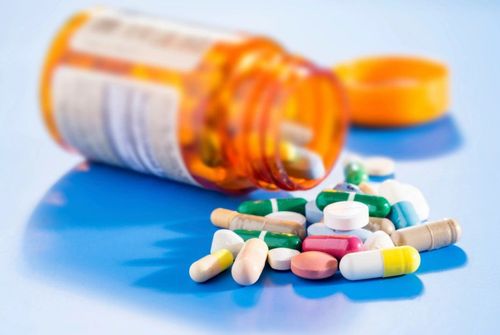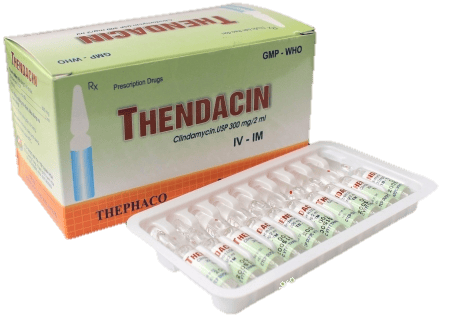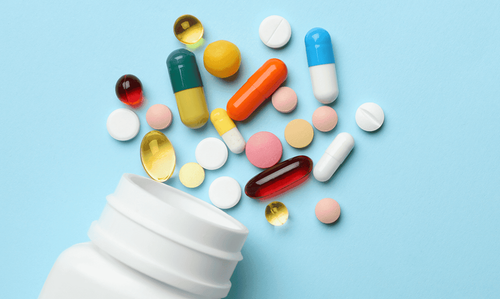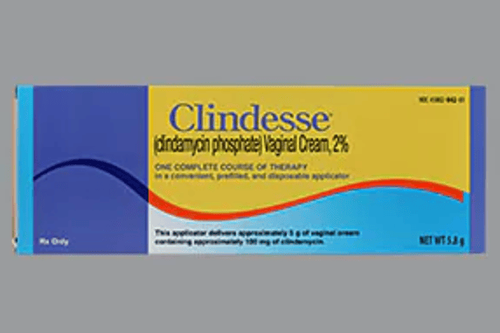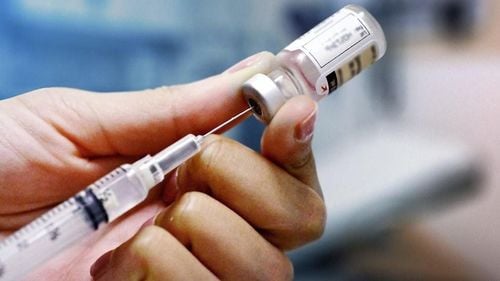This is an automatically translated article.
Unilimadin is an antibiotic, anti-infective, anti-parasitic drug, belonging to the group of prescription drugs, containing the main ingredient clindamycin, in the form of injections. The drug treats serious infections such as skin infections, lower respiratory infections including lung abscesses, pneumonia, abdominal infections, sepsis,...1. What is Unilimadin?
Unilimadin is a lincosamide antibiotic with the main ingredient Clindamycin. Unilimadin 300 and Unilimadin 600, respectively, contain 300mg and 600mg of clindamycin, an injectable drug for quick action and effective treatment of severe infections.Clindamycin is an antibiotic of the lincosamide family. The effect of the drug is due to the main drug binding to the 50S subunit of the ribosome, thereby inhibiting the protein synthesis of bacteria. The antibiotic clindamycin is bacteriostatic at low drug concentrations, bactericidal at high drug concentrations. The mechanism of bacterial drug resistance is plasmid-mediated methylation of RNA contained in the 50S subunit of the bacterial ribosome. In vitro effects of clindamycin against the following bacteria: Aerobic Gram-positive cocci: Staphylococcus aureus, Staphylococcus epidermidis, pneumococcus,... Anaerobic gram-negative bacilli: As species Bacteroides(B. fragilis). .. Anaerobic but non-spore forming gram-positive bacilli such as Propionibacterium, Actinomyces spp. Anaerobic gram-positive cocci such as Peptococcus, Clostridium perfringens. Other groups of bacteria such as Chlamydia trachomatis, Plasmodium falciparum, Gardnerella vaginalis, Propionibacterium acnes.. Clindamycin after being injected into the body, the drug is widely distributed in body fluids and tissues including bone, but the distribution did not reach significant concentrations in the cerebrospinal fluid. The half-life of the antibiotic clindamycin is about 2 to 3 hours. More than 90% of the drug is bound to plasma proteins. Unilimadin is metabolized mainly in the liver. Elimination of the drug is excreted in the urine as active or metabolites and the drug is also excreted in the faeces.
2. Indications and contraindications of Unilimadin
2.1. Indications Unilimadin is indicated for the treatment of serious infections caused by susceptible strains of bacteria, including:
Severe lower respiratory tract diseases such as pneumonia, lung abscess, pleurisy. Infections of the skin and structure of the skin. Gynecological infections include endometritis, perineal ring infection, pelvic cellulitis, uterine abscess, and nongonococcal ovitis. Intra-abdominal infections, including peritonitis, and abdominal abscesses caused by susceptible anaerobic bacteria. Sepsis, bone infection and inflammatory joint disease including acute osteomyelitis. 2.2. Contraindications Do not use Unilimadin in case the patient has a history of hypersensitivity to preparations containing the antibiotic Clindamycin or Lincomycin, the excipients of the drug.
3. Dosage and how to use Unilimadin
3.1. How to use Unilimadin is administered intramuscularly or intravenously.
How to dilute the infusion before intravenous use: Make sure that the concentration of clindamycin drug after dilution should not exceed 18mg/ml. The intravenous infusion rate should not exceed 30 mg/min. The recommended infusion rate dilution is as follows: 300mg dose, 50ml diluent, 10 min infusion time. The dose is 600mg, the diluent is 50ml, the infusion time is 20 minutes. The dose is 900mg, the diluent is 50-100ml, the infusion time is 30 minutes. The dose is 1200mg, the diluent is 100ml, the infusion time is 40 minutes. When diluted according to the instructions above, Unilimadin is stable for 16 days if stored well at room temperature (about 25 degrees Celsius) or for 32 days if stored in the refrigerator at 4 degrees. C, or the drug holding time reaches 8 weeks if stored in frozen conditions (-10 degrees C). 3.2. Dosage of Unilimadin drug is prescribed according to the doctor's regimen, or the patient can refer to the dosage of the drug according to the following manufacturer Union Korea Pharma Co., Ltd:
Adults: Severe infections: Dose 600mg to 1200mg daily, divided into 2, 3 times or 4 times, evenly spaced throughout the day. More severe infections: The injection dose may be increased to 1200mg to 2700mg per day in 2, 3 or 4 divided doses. For more serious infections, the dose may need to be increased. In life-threatening cases of aerobic or anaerobic bacterial etiology, the dose may be increased. Doses of up to 4800 mg per day should be administered intravenously to adults. Intramuscular injection requiring doses greater than 600 mg each time is not recommended. The drug may be indicated as a rapid intravenous infusion for the first dose, followed by a continuous intravenous infusion: Rapid infusion rate above 4 μg/ml 10 mg/min for 30 minutes, maintenance infusion rate 0.75 mg/min . Rapid infusion rate over 5μg/ml 10mg/min for 30 minutes, maintenance rate of 1.00mg/min. Rapid infusion rate over 6μg/ml 10mg/min for 30 minutes, maintenance rate of 1.25 mg/min. Newborns under 1 month: Dose for intramuscular or intravenous injection according to the formula 15 - 20mg/kg/day, divided into 3 times or 4 times. Pediatric patients from 1 month to 16 years old: Inject the drug dose according to the formula 20-40mg/kg/day, divided into 3 times or 4 times.
4. Unwanted effects when using Unilimadin drug
Unwanted effects during the patient's use of Unilimadin include:
On the gastrointestinal tract: Colitis, pseudomembranous colitis, abdominal pain, vomiting or nausea. Allergic Hypersensitivity Reactions: Erythema, urticaria, maculopapularity have occurred during treatment, erythema of the skin resembling a mild to moderate measles rash, rarely seen erythema polymorphism. Stevens-Johnson syndrome may occur, anaphylactic reactions have been reported. If a hypersensitivity reaction occurs, the patient should stop taking Unilimadin.
Skin and mucous membrane signs: Skin itching, vaginitis, rarely exfoliative dermatitis reactions. Hepatic: Jaundice and liver function abnormalities have occurred with clindamycin treatment. Blood tests show eosinophilia, transient neutropenia is noted, agranulocytosis and decreased platelet count may occur. Injection site reactions such as injection site stiffness, injection site abscess, and thrombophlebitis after infusion. Musculoskeletal: Rarely polyarthritis. Cardiovascular: Rarely, cardiopulmonary arrest, hypotension after rapid intravenous administration.
5. Notes when using Unilimadin
Drug Interactions: Unilimadin may enhance the effects of other neuromuscular blocking agents. In vitro, there is an antagonism between the drug and the antibiotic erythromycin, so do not use these two drugs at the same time. Pseudomembranous colitis may be diagnosed in patients who develop diarrhea after taking the drug. When the drug is stopped, the disease may go away. In case of moderate to severe disease, it is necessary to control fluids, electrolytes and protein supplements, and treat with another antibacterial drug. Treatment with antibacterial agents alters the flora of the colon, which may lead to overgrowth of clostridia. Studies indicate that a toxin caused by the bacteria clostridium difficile is the main cause of antibiotic-associated colitis. Patients should note that when having diarrhea or colitis, pseudomembranous colitis is usually at the start of drug therapy until several weeks after stopping treatment. Caution should be exercised when prescribing the drug to patients with a history of gastrointestinal disease, especially colitis. The drug should not be injected directly into the patient's vein, it should be diluted and infused over at least 10 to 60 minutes. It is not necessary to adjust the dose of Unilimadin in patients with renal disease, patients with moderate to severe liver disease. However, periodic measurement of liver enzymes is necessary when treating patients with severe liver disease. When long-term therapy is required, liver function tests, kidney function tests, and blood counts should be performed periodically. There are no adequate and appropriate controlled studies of the drug in pregnant women, so Unilimadin should be used during pregnancy only when clearly needed. Use during lactation: Clindamycin may be excreted in breast milk. Use caution when administering Unilimadin to a nursing woman. Above is an article about Unilimadin drug. This is an antibiotic in the prescription group, patients should not arbitrarily use Unilimadin without a doctor's prescription. The drug is effective quickly in the treatment of many inflammatory diseases caused by bacteria sensitive to clindamycin. If you have any questions or concerns about Unilimadin, please consult your doctor, pharmacist or medical staff.




